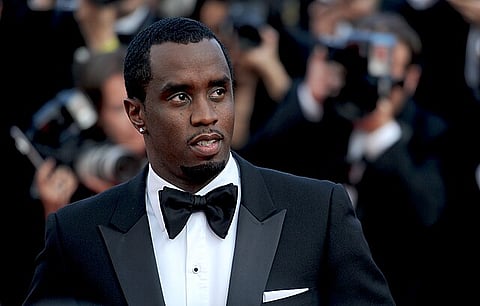
- Home
- NG Hindi
- India
- World
- Politics
- Sex & Relationships
- Entertainment
- Culture
- Lifestyle
- Economy
- Sports
- Sp. Coverage
- Misc.
- NewsGram Exclusive
- Jobs / Internships

By Few names in entertainment symbolize the collision of wealth, fame, and controversy as vividly as Sean “Diddy” Combs. The hip-hop mogul has built an empire spanning music, fashion, and spirits, earning him a spot among the richest entertainers in the world. Yet alongside his empire lies an ongoing cycle of lawsuits, allegations, and intense public scrutiny. Beyond the headlines, Diddy’s life offers a fascinating lens into the psychology of power, affluence, and the pressures that shape high-profile figures.
Diddy’s persona has long been built on luxury—lavish parties, yachts, designer clothing, and multi-million-dollar mansions. In psychology, this can align with narcissistic traits, where external validation and grand displays become mechanisms to affirm self-worth. However, within the entertainment industry, such behaviors are also strategic: luxury itself becomes a brand. For Diddy, the performance of opulence blurs the line between authentic personality and business necessity.
Research in behavioral psychology suggests that public figures often internalize their curated image. What begins as branding can morph into genuine self-perception, creating a fragile dependency on wealth displays and dominance to maintain status.
Raised in Harlem, Diddy’s early years were marked by hardship, including the murder of his father when he was just three. Childhood trauma often creates cycles of overcompensation in adulthood, where individuals seek power, control, or wealth as protective mechanisms against vulnerability. Psychologists link this to trauma-driven ambition, where unresolved pain fuels an insatiable drive to succeed.
Such cycles can also manifest in destructive patterns—an inability to step away from conflict, or difficulty regulating relationships without dominance. In Diddy’s case, his empire may represent not just business acumen, but also a fortress against the instability of his youth.
Over the years, Diddy has faced a series of lawsuits ranging from contractual disputes to more serious allegations. For figures accustomed to controlling their narrative, lawsuits pose a unique psychological challenge: they strip away privacy and impose accountability. From a psychological standpoint, such scrutiny can trigger ego-threat responses—aggressive denials, counter-lawsuits, or attempts to reassert dominance in other areas of life.
The cycle of fame is equally important here: the larger the public image, the more scandals attract attention, feeding into a relentless loop where one’s personal struggles become public spectacle.
Diddy’s trajectory is not unique—many high-profile figures embody similar psychological themes:
Narcissistic Reinforcement: Constant external praise sustains but also destabilizes self-image.
Power and Paranoia: With extreme wealth comes heightened vigilance; allies are vetted, and enemies often exaggerated.
Impulse and Risk: The thrill-seeking behavior linked with success in creative industries can spill into personal choices, leading to high-risk lifestyles.
The paradox lies in how these traits fuel success while simultaneously laying the groundwork for potential downfalls.
Diddy is not just an individual but also a cultural symbol of hip-hop’s ascension into global wealth and power. His empire reflects broader societal narratives: the pursuit of the American dream, the intersections of race and capital, and the costs of maintaining influence in an age of hyper-surveillance.
As lawsuits mount and scrutiny intensifies, Diddy’s story may come to symbolize the limits of affluence as a shield against accountability.
The story of Sean “Diddy” Combs is as much about psychology as it is about music or money. His empire stands at the crossroads of luxury, trauma, narcissism, and societal expectation. While affluence offers insulation, it also magnifies behavior, leaving no misstep hidden. Whether viewed as a self-made visionary, a symbol of excess, or a man wrestling with cycles of trauma and power, Diddy embodies the complex psychology of high-profile figures living under the world’s microscope.
(NS)
Also Read:
